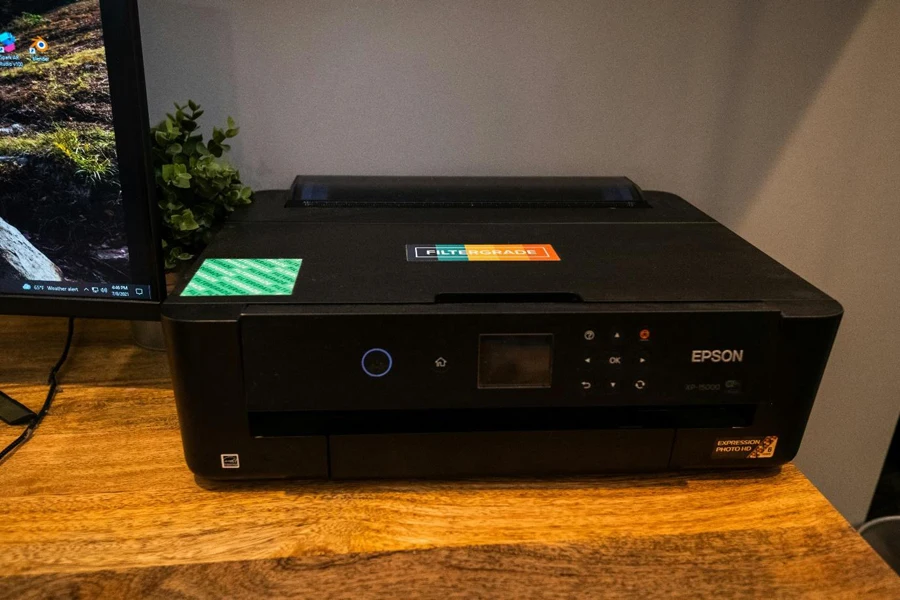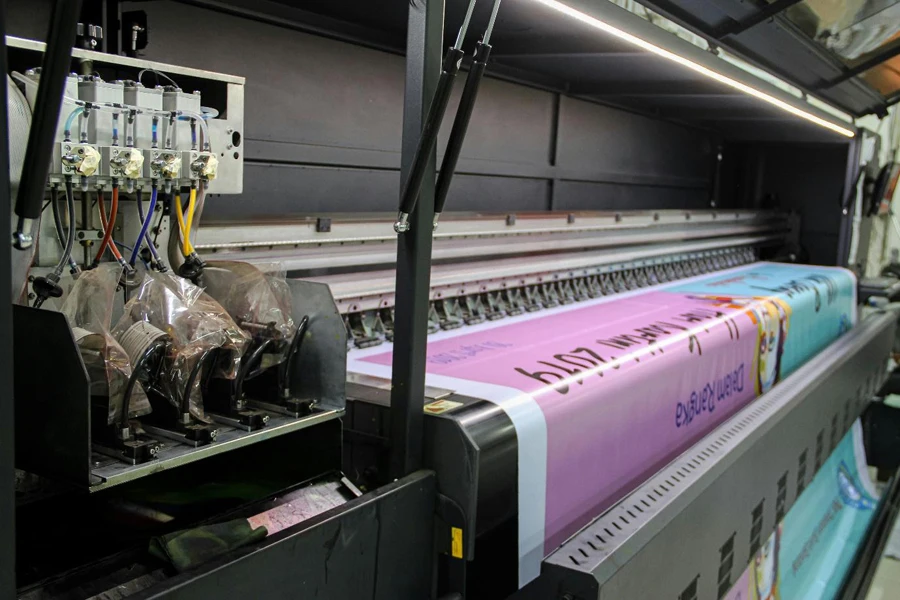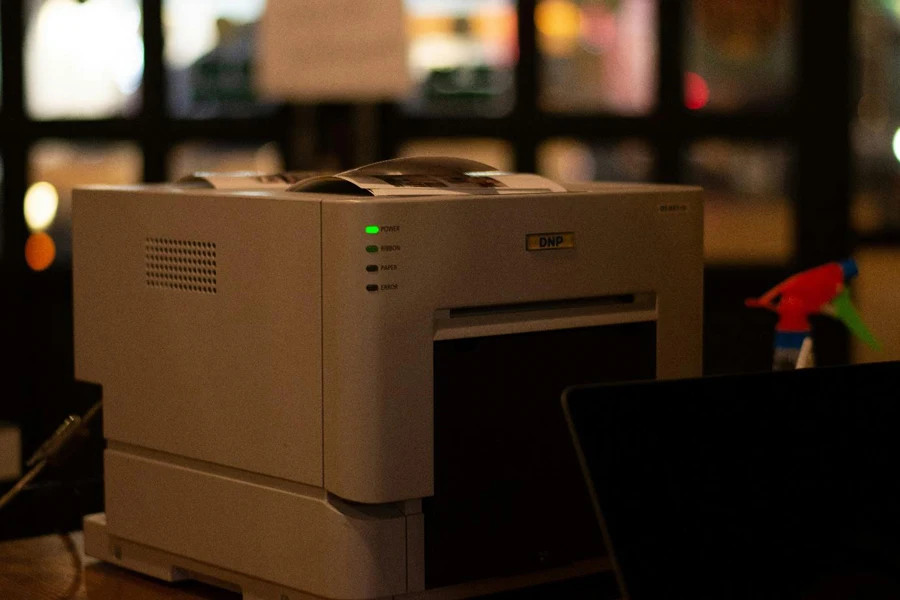Dot matrix printers are well regarded for their robustness and capability to generate carbon copies simultaneously. These qualities continue to be valued in sectors relying on high-volume text output as a key requirement. Even though modern alternatives such as laser and inkjet printers have dominated industries for years, dot matrix devices still serve a specialized niche where impact printing is indispensable. Being aware of industry shifts like declining demand and key market players is crucial for making informed choices when it comes to procurement decisions. This article offers an overview of the kinds of dot matrix printers available and important aspects to keep in mind when choosing the perfect model.
Table of Contents
● Understanding the dot matrix printer market landscape
● Key types of dot matrix printers and their unique features
● Essential factors when choosing the right dot matrix printer
● Conclusion
Understanding the dot matrix printer market landscape

A shrinking but specialized market
Over the coming years, the global dot matrix printer market is projected to shrink. In 2024, the market is valued at USD 2.7666 billion and is predicted to decline to USD 2.33353 million by 2032, CAGR of -2.4%. This downward trend is primarily driven by advancements in newer printing technologies, such as laser and inkjet printers, which offer superior print quality and speed. Despite this, dot matrix printers remain indispensable in niche sectors that require impact printing, particularly for multi-part carbon copy forms.
Key players dominating the market
Major manufacturers like EPSON, OKI, Fujitsu, and Toshiba dominate the dot matrix printer market, accounting for over 50% of the global market share. These brands remain preferred in the finance, government, and logistics sectors, where reliability and carbon copy printing are crucial. China, North America, and Europe are the largest consumers of dot matrix printers, with Asia-Pacific, particularly China, being a key player due to its strong manufacturing base and domestic demand, according to Global Market Stats and Figures.
Key types of dot matrix printers and their unique features

Low, middle, and high-resolution printers
Dot matrix printers are categorized based on the number of pins in their print heads, directly impacting the print resolution and application. Low-resolution printers, featuring 9 pins, are typically designed for fast, simple text printing with minimal graphic requirements, making them ideal for tasks like basic receipts. Middle-resolution printers, often equipped with 18 pins, provide better text clarity and are used in environments where a balance between speed and quality is necessary. High-resolution printers with 24 pins deliver the sharpest output, producing clearer characters and finer details, which are critical for tasks requiring legible multi-copy forms or high-quality graphics. Although these high-resolution models can print complex characters and logos, they may be slower than their lower-resolution counterparts.
Impact on print speed and quality
The number of pins also affects the printing speed, measured in characters per second (CPS). Low-resolution models can reach up to 500 CPS speeds, while high-resolution printers can slow down to around 200-400 CPS due to the increased detail in each print. For example, a 24-pin printer creates more detailed characters by utilizing finer dot arrangements, requiring additional time for each pass of the print head. Additionally, printers that offer adjustable spacing, such as 12 cpi (characters per inch) or 15 cpi, provide flexibility in balancing print speed and resolution depending on document requirements. Bi-directional printing technology further enhances speed, allowing the printer to print on both passes of the print head’s movement, doubling the output speed.
Durability and multi-part form printing
A standout feature of dot matrix printers is their ability to handle multi-part form printing, which is essential for creating up to six carbon copies in a single print run. Impact printing means the pins physically strike the paper through an ink ribbon, pressing through layers of carbon or pressure-sensitive paper. This durability makes these printers indispensable in high-volume, repetitive tasks such as generating invoices, purchase orders, or shipping labels. Their robust construction enables continuous operation in demanding environments like warehouses or shipping departments, often with a mean time between failures (MTBF) ratings exceeding 10,000 hours. Additionally, tractor-feed mechanisms allow for precise handling of continuous forms, ensuring reliable, consistent performance in producing multi-copy documents.
Essential factors when choosing the right dot matrix printer

Size and space requirements
Size is one of the first considerations when selecting a dot matrix printer. Smaller models are suitable for offices with limited space, fitting easily on a desk. However, larger models are essential for businesses handling high print volumes as they come with additional capabilities like continuous-feed paper handling. The larger units are also more robust, making them better suited for environments with heavy printing demands, such as logistics or financial departments.
Speed vs. demand
The printing speed of dot matrix printers, measured in characters per second (CPS), varies depending on the model and number of pins. Entry-level machines may produce around 50 to 500 CPS, suitable for low to medium-demand environments, while high-performance models can reach up to 5000 CPS. In industries where rapid document generation is crucial, such as retail or warehousing, a printer with higher CPS ensures that orders and invoices are processed quickly and efficiently. Balancing speed with the volume of work is critical to ensure operations run smoothly without bottlenecks.
Print quality and pin count

The pin count in dot matrix printers ranges from 9 to 24, with higher pin counts resulting in better print quality. A 9-pin printer is ideal for standard text-based documents, while a 24-pin printer produces higher resolution prints, suitable for more detailed forms or documents requiring greater clarity. Businesses needing carbon copy invoices or multi-part forms will benefit from a higher pin count, ensuring all form layers are legible and accurate.
Energy efficiency and operating costs
Since dot matrix printers are often used for extended periods, energy efficiency is crucial. High energy consumption can increase operational costs, especially in busy environments where printers run continuously. Choosing models with lower power consumption ensures long-term savings while maintaining productivity. Additionally, models designed to reduce paper waste through precise printing can further cut operational costs, making them environmentally and financially beneficial.
Added functionalities
Modern dot matrix printers may have added features such as an auto-cutter, which reduces manual intervention and enhances workflow efficiency. Other features like self-cleaning print heads or low-maintenance designs reduce downtime and the need for frequent servicing, which is particularly valuable in busy settings. For businesses that rely on continuous and reliable printing, these functionalities ensure that the printer remains productive with minimal operator involvement.
Conclusion

Selecting the right dot matrix printer requires a deep understanding of the market landscape and the specific features that align with business needs. Assessing factors like print speed, resolution, durability, and energy efficiency becomes critical in environments where high-volume printing and carbon-copy production are essential. By considering these elements, businesses can ensure they invest in printers that deliver reliability and cost-effectiveness in demanding operations. This approach maximizes productivity and ensures long-term value in specialized printing environments.



